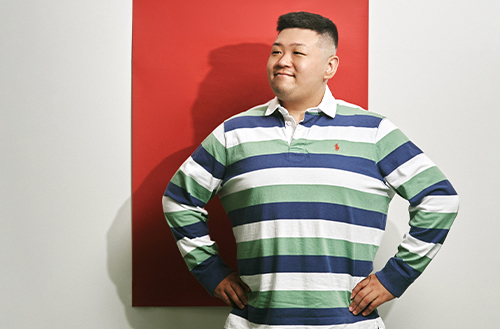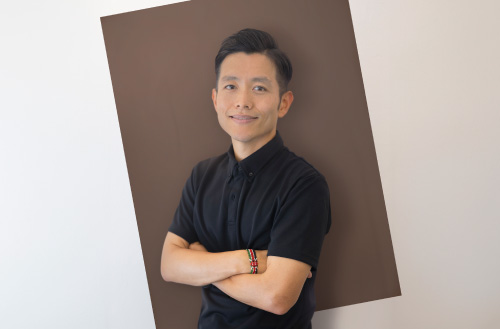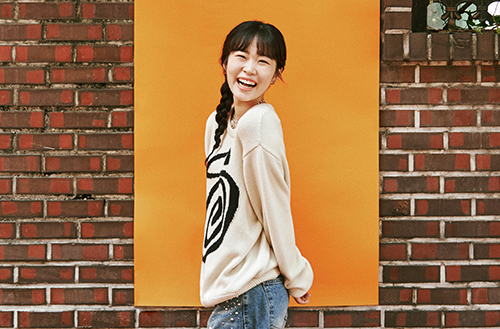
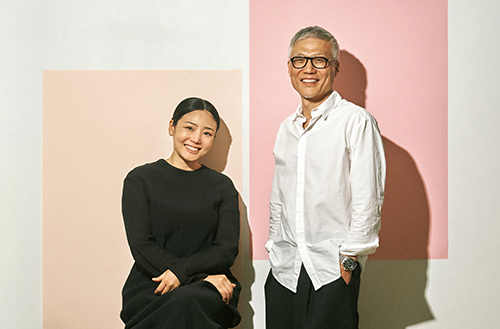
-
-
- 메일 공유
-
https://stories.amorepacific.com/en/amorepacific-people-who-want-to-make-it-their-own
People Who Want to Make It Their Own
Kim Soo-yeon, Lim Sang-wan – Founders of HANGING STUFF

Interviewees
Kim Soo-yeon, Lim Sang-wan Founders of HANGING STUFF


In an era where beauty comes from ‘being oneself,’ Amorepacific’s fresh content series, “Exploring New Beauty,” seeks to engage individuals across generations, diving into their personal narratives of their own beauty. Episode six introduces the story of HANGING STUFF, a brand that reinterprets past glories in design, highlighting timeless beauty that endures through the ages.
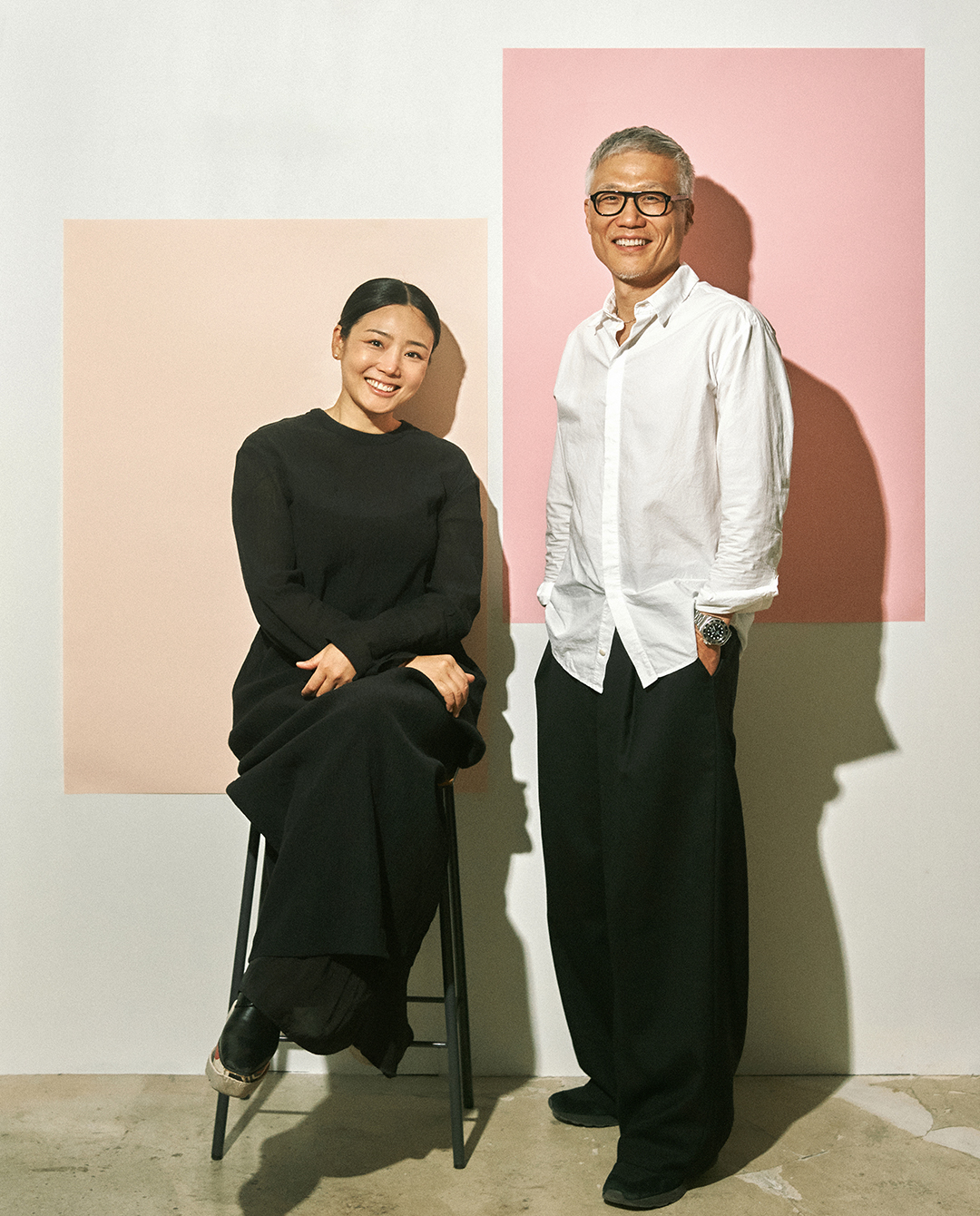
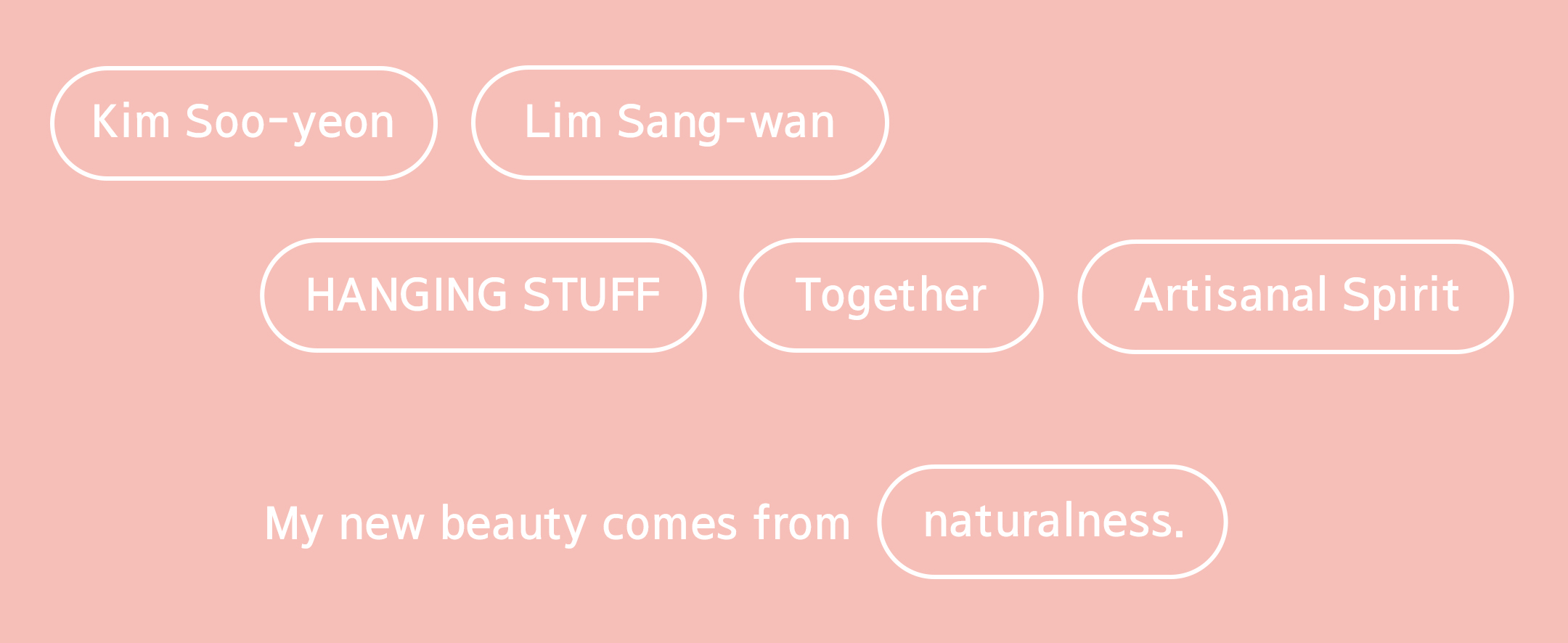
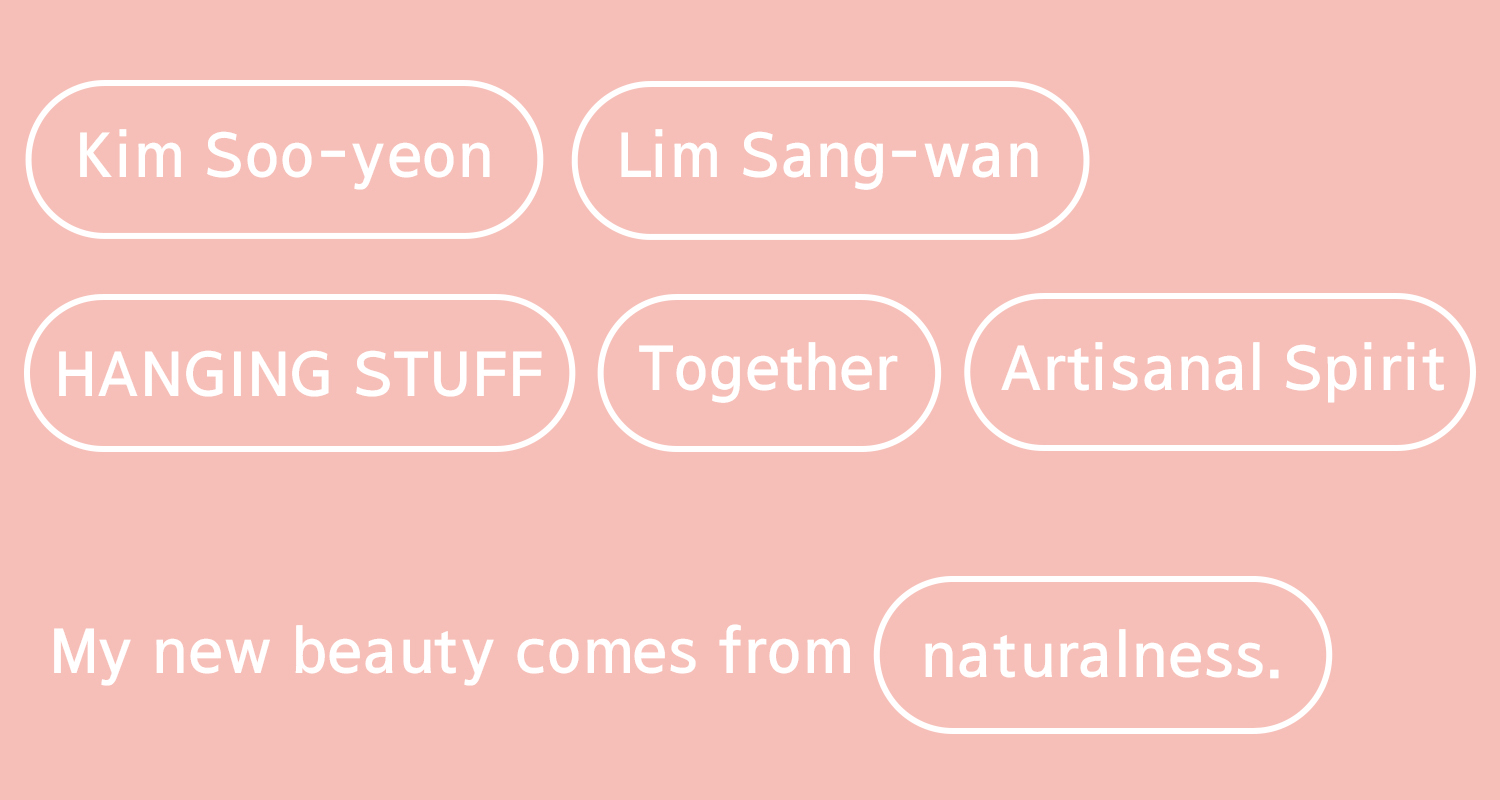
As we navigate our busy lives, a question often grabs us unexpectedly: Am I doing what I truly want? In a time when the concept of retirement is fading, many strive to separate work from life, yet perhaps the two are inherently intertwined. If so, isn't genuine 'authenticity' connected to our work? Kim Soo-yeon and Lim Sang-wan, the sixth protagonists of 'Exploring New Beauty,' speak about the fulfillment of creating something uniquely their own. They commit fully to their work, letting the outcomes follow naturally. Rain or shine, they cultivate their field with dedication. Their bright eyes and powerful voices convey a dynamic, both eruptive and convergent energy.
Objects That Resemble Me
What kind of brand is HANGING STUFF?
Sang-wan HANGING STUFF is a brand that seeks out and introduces items that feel more special when hung. We primarily reinterpret objects we love that have disappeared. These are things that, although no longer around, still possess beauty. We've produced items like the stainless steel 'Adhunik Indian Rack' and the round 'Rond French Hanger.' The items we collected and loved have resonated with people. Because these designs were discontinued in Europe, we had to find local artisans in Korea to recreate them.
Soo-yeon Our first project was the Sinchon Cultural Center. In December 2019, we started remodeling two old buildings in Sinchon to create a multi-use space, but COVID-19 hit the following year. When we felt there was nothing we could do, we decided to pursue the things we had always wanted to do. We wanted to install vintage metal cabinets in the eight units of the Sinchon Cultural Center, but they were hard to find. Eventually, we restarted a factory in India to produce them. Initially, we imported from India, but later, we decided to improve quality by manufacturing locally.
Why did you choose items that are vertically oriented?
Soo-yeon Looking around, we noticed many objects in our home and workspace were hung—furniture, lighting, mirrors. These items weren't on the floor but on the walls. We seemed to prefer practical items that didn't interfere with our living space.
Sang-wan For brand clarity, we needed a clear direction. We thought 'things you hang on the wall' would be an easily accessible concept for people. We named it HANGING STUFF, hoping it would be naturally understood.
How would you describe your work in a sentence?
Soo-yeon We call ourselves 'creators.' At some point, we decided only to do what we loved. We create HANGING STUFF; I work on sewing projects, and Sang-wan makes makgeolli. We just create things we love.
Sang-wan To share what we create, we established a brand. This involves marketing, but fundamentally, we make, introduce, and sell our creations.

What did you do before this?
Soo-yeon I started my career as a journalist, became a marketer, and eventually ran my branding design company. It was an agency. I've always had a dream of making something of my own.
Sang-wan I was a company employee. Like Soo-yeon, I ‘wanted to do something of my own.’ I wasn't sure what exactly, but I began preparing earnestly when the time felt right.
So, the idea of doing something of your own was a common theme for both of you.
Soo-yeon About seven years into running the agency, the company was at its peak. I felt it was a time when brands or individuals could start doing their things. Even without all the tools, it became an era where we could introduce and share what we loved.
Sang-wan Exactly. We realized that in the future, rather than providing services for others, we needed to establish ourselves as creators and build our brand to survive. We decided it was time to start our own venture before it was too late. That's the kind of conversation we had.
How do you hope your creations will integrate into people's daily lives?
Sang-wan We hope our products will be remembered and cherished for a long time. Our designs are reinterpretations of models used decades ago, making them closer to 'steady sellers.' Even if we don't sell thousands, we believe those following us will keep our items in their spaces for a long time.
Soo-yeon More than selling many products, we hope our items reach those who genuinely need them. HANGING STUFF products are primarily sold on our site, which means people seek them out. They don't just stumble upon them online; they think of our products when they need something specific for their space. This gives our products more value, as our customers understand and appreciate them, choosing them for their spaces when the time is right.
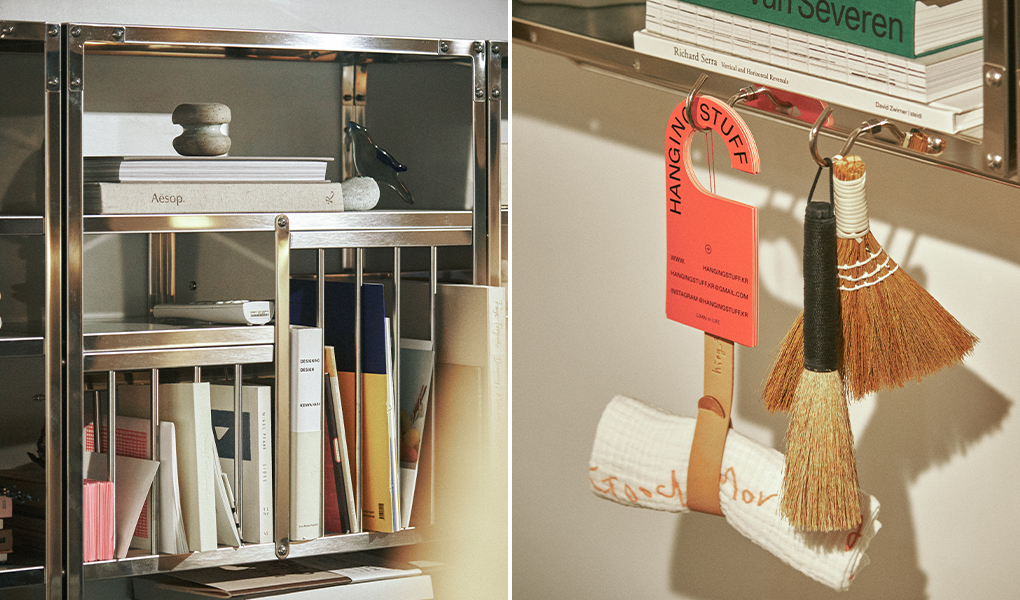
The Specialness That Comes from Being Together
How do you divide your roles?
Soo-yeon We run the Sinchon Cultural Center space and HANGING STUFF together. I lead my sewing label, LIMN Original, but I discuss decisions with Sang-wan when I need his input. Similarly, Sang-wan leads his makgeolli brand, Lazy Dancing Circle. As we move forward, we both know and share what’s happening in each brand.
Was it challenging to work together?
Soo-yeon It's actually incredible. Many people ask if we argue since working as a couple is on a different level. At first, we did argue a lot. But it became more manageable once we realized we were both trying to find ways to succeed. The aspects of Sang-wan that I love are often those I don’t possess myself, so when he expresses those traits, I don’t resent him. I recognize them as the ‘qualities I fell in love with.’
Sang-wan It’s not difficult anymore. The union is greater than the sum of individual parts. Each of us has unique traits—A is distinct from B. Together, our brand represents the intersection of our strengths, while our labels represent our unique identities. Overall, it’s beneficial to have a partner with different strengths.
Can you share an example of how you collaborate?
Soo-yeon When we first moved in together, we established the ‘BBGW’ rule—only allowing blue, black, gray, and white items into our home. Both of us loved vibrant colors, so this rule helped reduce disagreements. Over time, we naturally gravitated toward black and white, simplifying things like shopping. It was like a detox—realizing that what we needed was within this spectrum brought a refreshing clarity.
Sang-wan It’s different from Steve Jobs wearing the same outfit to save time. Though we stick to white, none of our clothes are the same, so we still spend time choosing what to wear each morning. By defining our preferences and range, we gradually aligned our tastes.
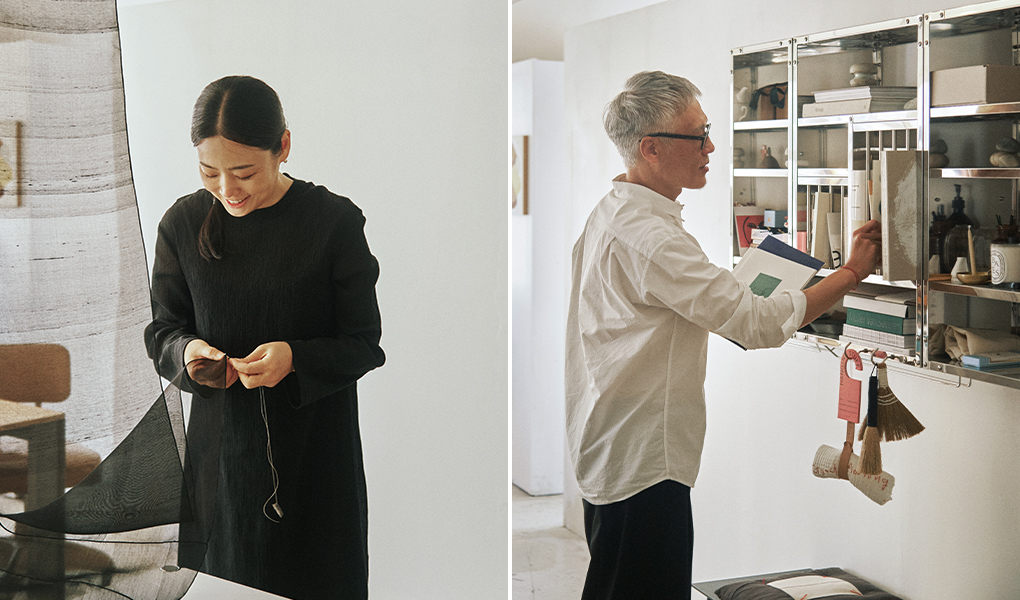
Is there a shared goal you both aspire to?
Soo-yeon Our choice to pursue sewing and makgeolli wasn’t just out of passion but also strategy. We wanted to engage in work that embodies craftsmanship. Many professions fade with time, leading to retirement, but sewing and making makgeolli become more artisanal with age. Building this foundation now will bring us pride in the future, enabling us to continue into our seventies and eighties.
Sang-wan One of my biggest wishes is that my work remains valuable until my last breath. Rather than retiring and resting, I want to keep creating things. I want to continually produce meaningful results that bring joy to people. This naturally ties into the brand we are building because our brand represents us.
The Work That Defines 'Us'
Have you ever felt anxious about relying on what you love to make a living?
Soo-yeon I felt more anxiety running the agency. Worrying about clients choosing us or securing contracts for the next year often made me feel adrift. The stress of being selected by someone else led me to create my work. Nowadays, I liken it to ‘living like a farmer’—sowing seeds and letting the rain wash them away. We believe the right people will notice us as long as we keep doing our work. Of course, it’s scary, but we move forward, acting with the mindset of sowing seeds.
Sang-wan I felt that anxiety more acutely within the company. The work was limited, and as the years went by, I feared leaving the company would make me feel useless. But I had a sense of what I liked and believed in, so I left determined to pursue my path. It’s not about whether I’m an employee or a business owner; it’s about what I’m doing now and how I can do it better. That discovery process, driven by a desire to improve, leads to further discoveries through others' experiences. There is only one path.
Just as you once worried, 'Can I stay with this company for my entire career?', your current concerns must be different now.
Soo-yeon We’re now focused on growing our brand. There are still new projects we want to undertake. We run four brands, but we don’t have the capacity to start anything new at the moment. If we do, we’ll have to let go of something else. Balancing is crucial, so we’re considering where to focus and grow.
Sang-wan Even after several years, we’re still learning. When things don’t go well, it’s often because we aren’t open to new perspectives. They say you see as much as you know. Realizing I didn’t understand something helps explain why certain things didn’t work out. We’re still discovering and growing.
Is there any pressure about execution?
Soo-yeon Failure is okay. We don't start something with the belief that everything will succeed. HANGING STUFF began during the pandemic because we couldn't do much else, so we decided to try making things. Our alcohol project also did better than we expected. We were lucky. Some ventures didn’t do well, like the overseas coffee bean import business that couldn't break into the market due to the pandemic and ultimately had to close. We live diligently, but we also remind ourselves not to overexert. We do our best, but it’s okay if things don’t work out. We aim for balance.
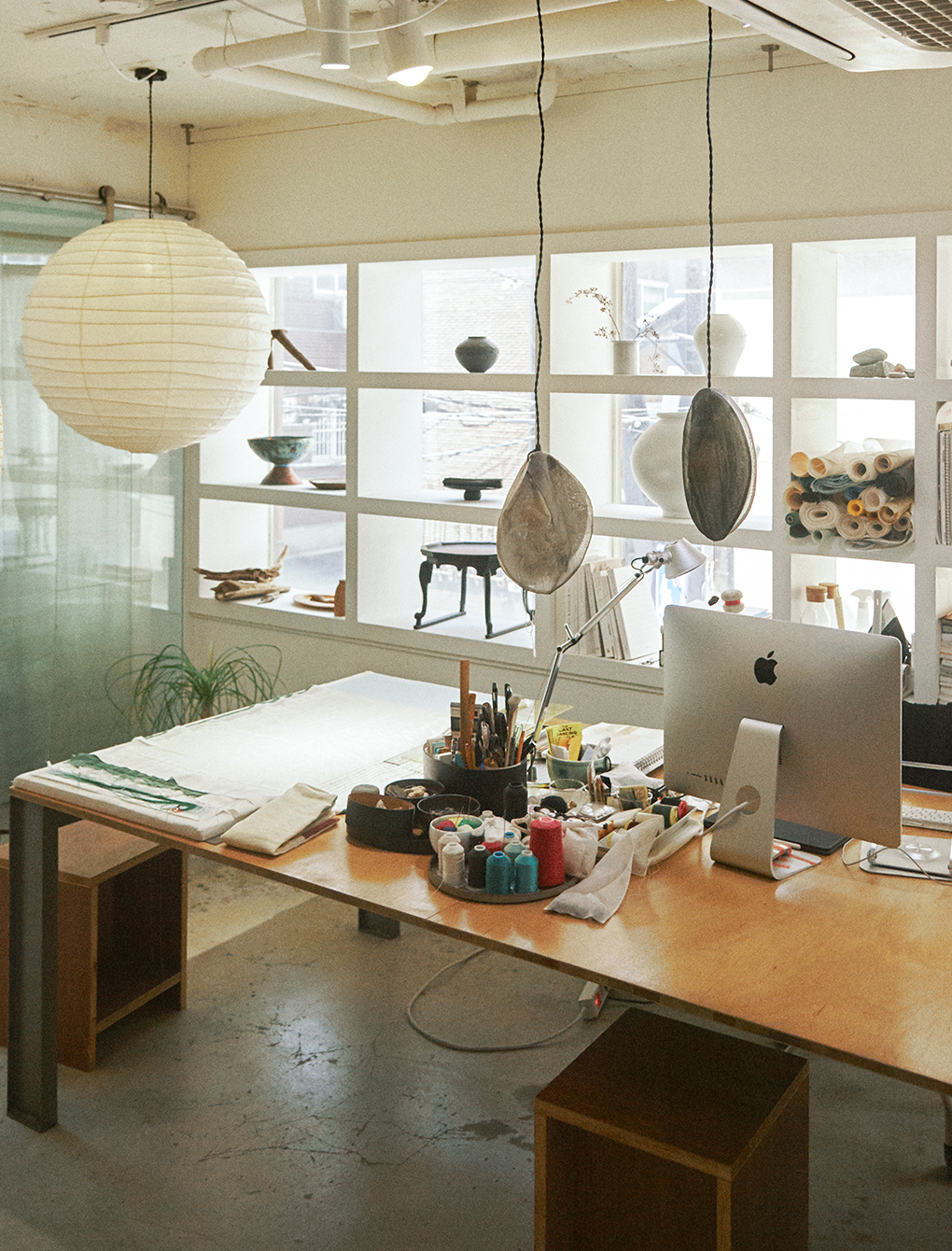
What are the top priorities in your life and decision-making process?
Soo-yeon Our priority is always us. For some, it's their children, specifically others, or ensuring better welfare for their company’s employees. For us, it’s ‘us.’ We consider whether the direction aligns with our planned plan when making significant decisions.
What would it be if you had to describe ‘your own beauty' in one word?
Soo-yeon Our own beauty is 'naturalness.' We always consider whether a decision feels natural. This extends to our products. In my sewing, I frequently use a natural color called 'sosaek,' which means unbleached, natural thread color. We value the beauty that emanates from naturalness.
Sang-wan HANGING STUFF products retain the naturalness of items made decades ago in India and exported to Europe. Nowadays, replicating that old method is more challenging. Advanced machinery tends to produce overly precise, mass-produced results. That's why we still incorporate manual processes. Even if the finish isn’t perfect, we want to preserve that handmade feel.
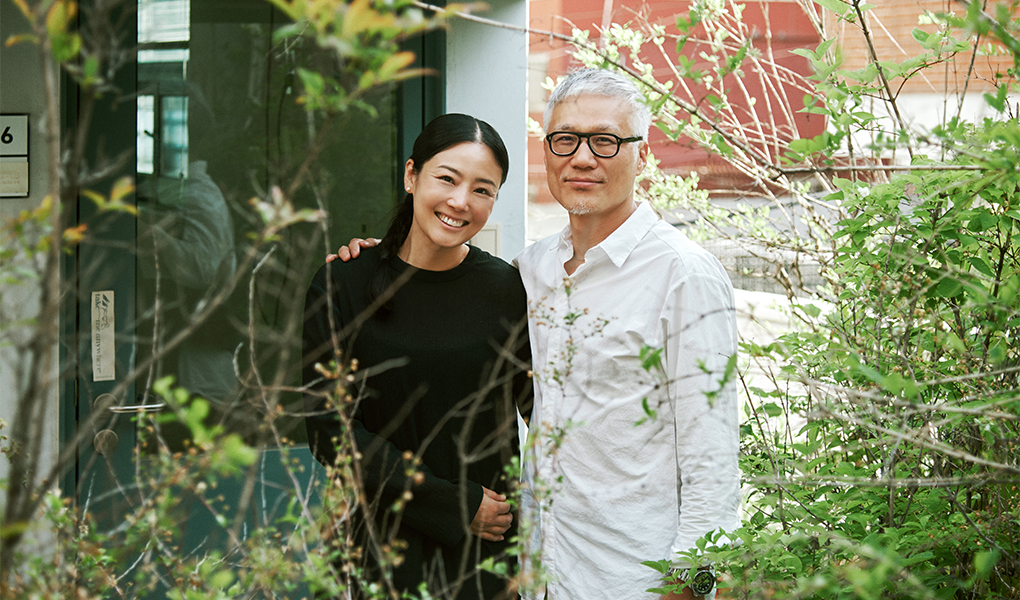


‘Exploring New Beauty’ introduces the stories of individuals across different generations as they discover ‘their own beauty’ within various lifestyles.
Editor Hyeon Ye-jin
Photo Kang Hyun-wook
Directing Around
Planning Amorepacific Communications Team
-
Like
0 -
Recommend
0 -
Thumbs up
0 -
Supporting
0 -
Want follow-up article
0



